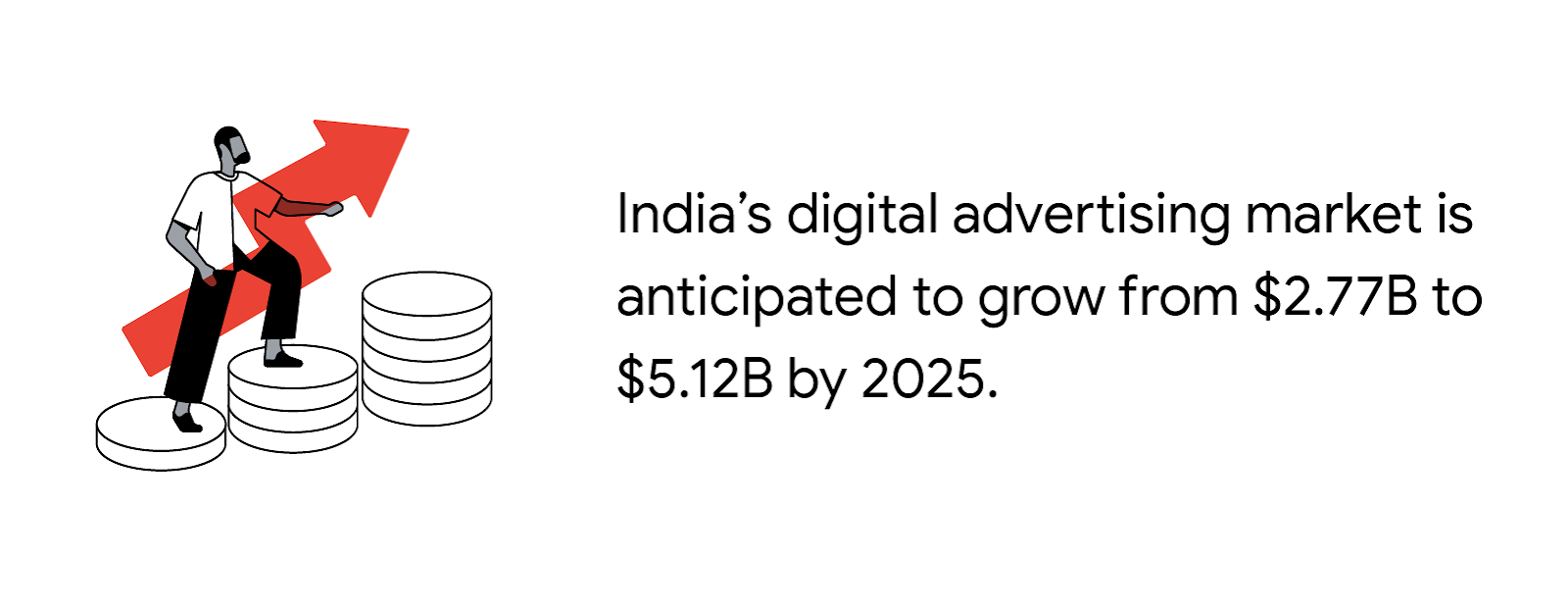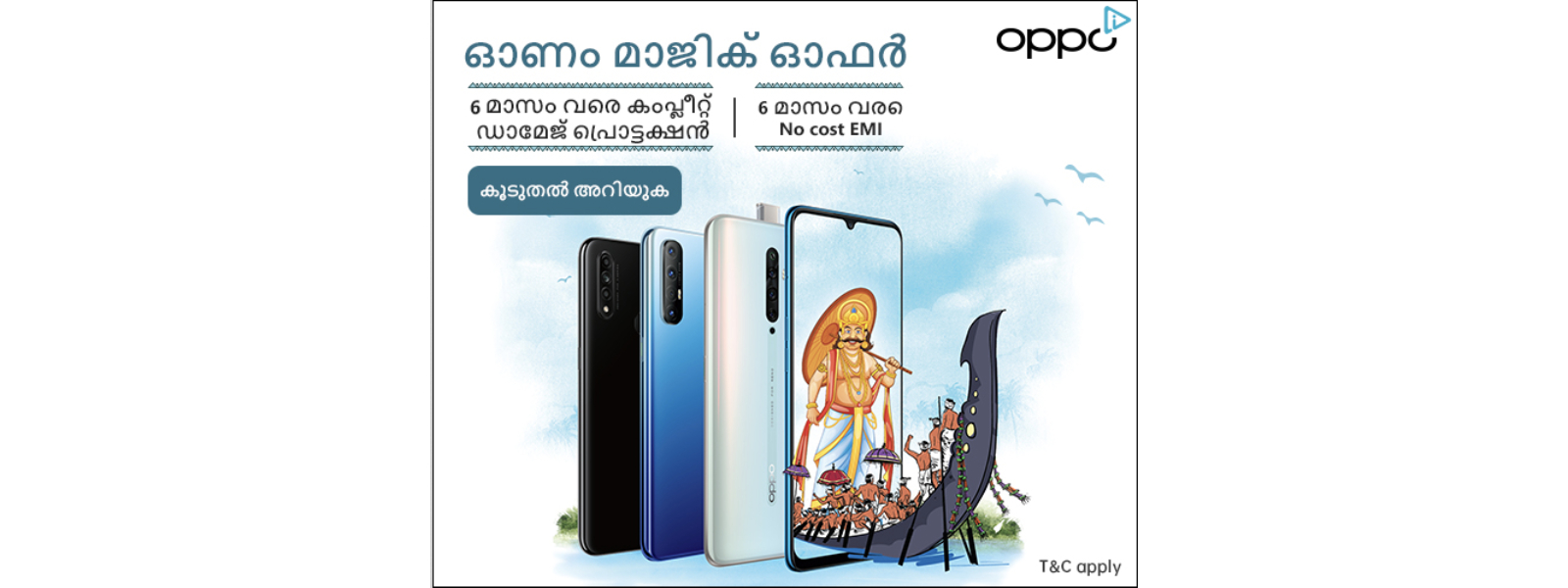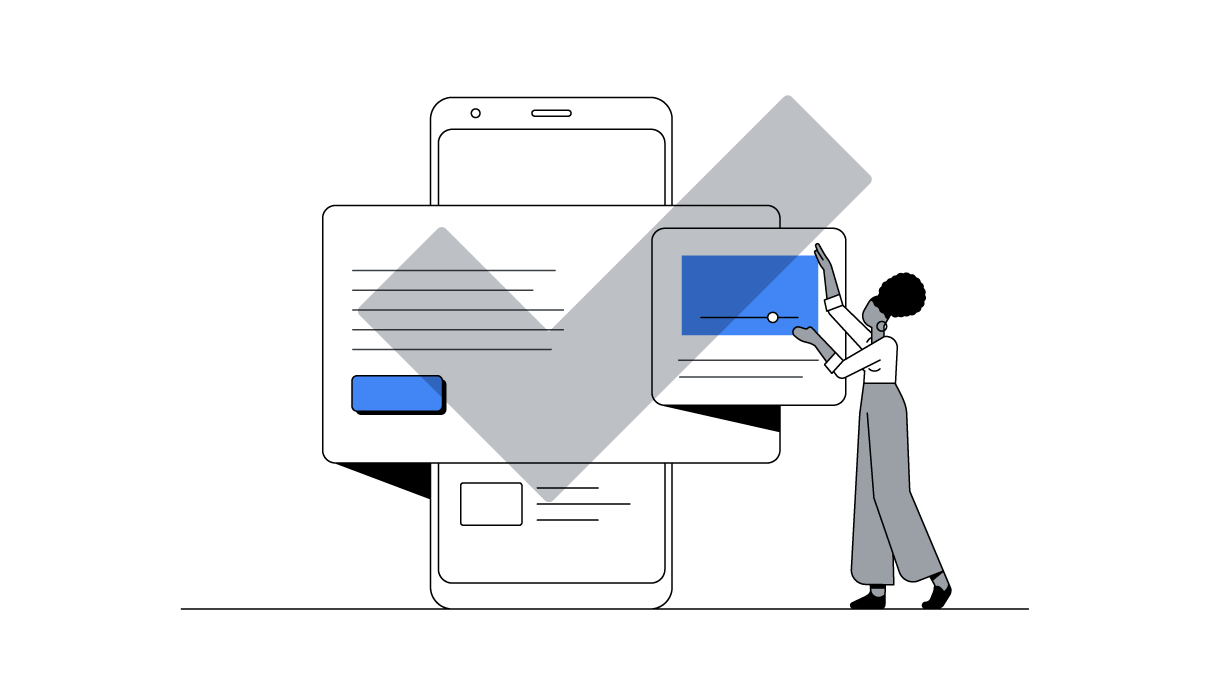Worth $2.77 billion in 2021, India is one of the world's largest digital advertising markets.1 In the past two to three years, digital ad expenditure in India has grown 5X. And as the competition gets stiffer, brands are investing more heavily in a variety of ad formats.

The importance of Display advertising
Display advertising is not only more cost-efficient than print, but it also allows advertisers to create engaging experiences online, in all kinds of shapes and sizes, to reach consumers.
To stand out, brands in India are getting creative with new ad formats on Display & Video 360. Here’s how Samsung India, OnePlus and Oppo used new digital tools to build an engaging online experience:
1. Put an interactive product showcase right into your display ad with 3D Swirl
Swirl is an immersive 3D display format designed for the mobile web. It turns ads into interactive interfaces, so shoppers can browse and marketers can better understand what consumers are interested in when making purchase decisions. Available in Display & Video 360, it makes a brand stand out in a sea of digital advertising.
Just after Samsung India launched the Galaxy Note 20 series in February 2020, India underwent a series of pandemic lockdowns in March. This severely affected store visits, which are central to the buying experience of a premium product like the Galaxy Note 20.
Among premium shoppers in India who prioritize features and specs over price, experiencing the product is an important part of the purchase decision. Even though consumers do their research online, 3 in 4 Indians prefer to buy smartphones offline. This posed a challenge for Samsung India, which had to find a creative way to communicate the features of its new, premium-priced phone.
The main draw of the Galaxy Note 20 is its sleek design. To convince customers to complete their purchase online, Samsung India needed to create an interactive experience to showcase the phone’s features.

“For the first time, our consumers could enjoy a virtual experience of the device from the comfort of their homes.”
Because 3D Swirl’s display format is responsive to user scroll, it allowed customers to have interactions with the phone right inside the ad. They could zoom in and out and rotate the device to view it from every angle.
The four-day experiment helped Samsung India stand out from other ads and reach 6.75 million users with an average frequency of three impressions per person. With 300 engaged hours, the ads also achieved a 6X higher engagement rate compared to industry benchmarks.
2. Have an actual conversation with every customer with conversational ads
Besides highlighting features and specifications, conversational ads help create an interactive experience to guide customers through the purchase journey — particularly for premium and high-value purchases. It keeps your brand top of mind, too.
OnePlus India had two goals when it launched the new OnePlus 8T phone. The first was to showcase the device’s key features. The second was to find out what consumers found most interesting about the device. The team decided to leverage conversational ads, available via Display & Video 360.

“For the OnePlus 8T, we wanted to highlight the premium features of the phone to our core users in an innovative manner. Conversational ads helped us engage our core users by creating a dialogue with them and driving up the engagement metrics on our site.”
These conversational ads can be personalized based on user interests. So the OnePlus team created a conversation flow to educate people on the new functionality of the OnePlus 8T while showcasing features that would be most relevant to that individual.
As a result, it drove real-time engagement while showcasing its new release. Afterwards, by analyzing users’ questions and responses, the brand could pinpoint which features customers found relevant.
To better understand what consumers want from a device, OnePlus India used conversational ads to run a question-led contest. The brand gathered insights about people’s preferences, such as whether they preferred powerful gaming performance or better battery life. This information can be funneled back into marketing creative and product development.
This campaign was the first time OnePlus focused on promoting its own website. And the jump in sales highlighted the potential of driving incremental revenue from its own channels.
The brand saw a 36% increase in time spent on their website, 12% higher sessions per user on the website and a 5X higher click rate on its ads (using RichMedia benchmarks).
3. Personalize at scale: Automate language-specific targeting
Local language ads have taken off in the past few years because they’re more relevant, personalized and engaging. Although inexpensive, content creation can be slightly difficult because translations take time and getting the nuance right is tricky. Automation helps marketers work at scale to serve the right ads at the right time to the right customer.
Local language ads have proven to help drive higher engagement at scale among Indian audiences. So when Oppo ran its Onam campaign in August 2020, the marketing team chose to invest in local language messaging across their creatives. The four-month long festive season in India is a period of celebration and shopping – and when many people upgrade their smartphones.


“India is a diverse country with more than 22 languages spoken across the country. Google Marketing Platform’s automated tech solution coupled with its targeting capabilities helped us reach the users in their preferred language and in the hassle-free production of vernacular creatives. As a result, we were able to gain media efficiencies through greater engagement.”
As people browsed, Display & Video 360 detected the language and served either English or Malayalam creatives using advanced language targeting. This targeting allowed Oppo to reach its audience on different vernacular websites, increasing click through rates (CTR) 3X for local language creatives, at 82% lower cost per click and 44% lower CPM compared to English creatives.
We want to make it easier for brands to build ads that are interesting and valuable to people. With these new Display & Video 360 tools, brands can personalize experiences to individual preferences and easily connect with those who speak other languages — all at scale. Give your media mix an edge and reach your customers in innovative ways with the latest in ad technology.







